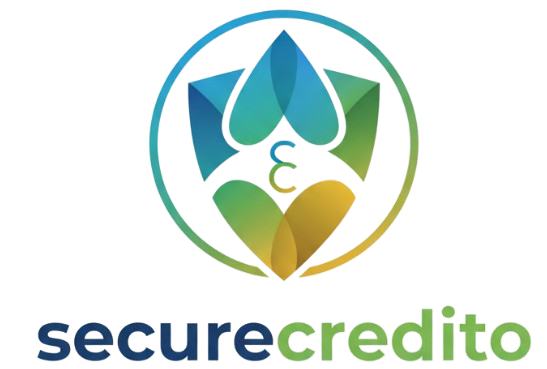Freelancing is one of the easiest ways to make money online today. The best part? You don’t need years of experience to start. Whether you are a student, a stay-at-home parent, or someone looking for a career change, freelancing can be your ticket to earning money on your own terms. Let’s break it down step by step.
Why Freelancing is a Great Option
Freelancing gives you flexibility. You can work from anywhere 🌍—your home, a coffee shop, or even while traveling. You set your own hours, and the earning potential is almost unlimited if you know how to sell your skills.
Start with What You Know
Even if you think you have no experience, you actually do! Think about the tasks you do daily or your hobbies: writing, graphic designing, editing videos, social media posting, data entry, or even tutoring. These can all be turned into freelance services.
Choose a Freelance Niche
Instead of trying to do everything, pick one area to start. A niche helps you stand out and makes it easier for clients to find you. Here are some beginner-friendly freelance niches:
| Niche | What You Can Do | Tools You Might Need |
|---|---|---|
| Writing | Blog posts, articles, product descriptions | Google Docs, Grammarly |
| Graphic Design | Social media posts, logos, banners | Canva, Photoshop |
| Virtual Assistant | Email management, scheduling, research | Trello, Excel, Gmail |
| Social Media Management | Posting, scheduling, captions | Buffer, Hootsuite |
| Data Entry | Input data, clean spreadsheets | Excel, Google Sheets |
| Video Editing | Short clips, YouTube videos | CapCut, Premiere Pro |
Build Basic Skills
You don’t need to be perfect to start. Just learn the basics of your chosen niche. Free resources like YouTube tutorials, free courses, and blogs can help you get started. Spend at least a few hours each day practicing before applying for your first project.
Create a Portfolio
Even if you have no clients yet, create samples of your work. For writers, this could be a few blog posts. For designers, create logos or mock social media posts. A simple online portfolio shows clients what you can do.
Start Small and Be Honest
When you’re new, start with small projects. Platforms like Fiverr, Upwork, and Freelancer let beginners get jobs easily. Always be honest about your experience. Clients appreciate transparency, and it builds trust.
Set a Fair Price
Don’t undervalue yourself, but don’t overprice either. Start with a rate you feel comfortable with and increase as you gain experience. Here’s a simple pricing strategy:
| Experience Level | Suggested Rate |
|---|---|
| Beginner | $5 – $15/hour |
| Intermediate | $15 – $30/hour |
| Experienced | $30+ /hour |
Learn How to Communicate
Good communication wins projects. Respond promptly, ask clarifying questions, and give updates. Clients love freelancers who keep them in the loop.
Use Freelance Platforms
Here are the top platforms for beginners:
-
Fiverr: Great for small gigs and beginners.
-
Upwork: More professional, but requires proposals.
-
Freelancer.com: Good for bidding on projects.
-
PeoplePerHour: Flexible and easy for starting out.
Market Yourself Outside Platforms
Don’t rely only on freelance websites. Use social media, LinkedIn, or even your friends and family to get your first clients. Posting your work online increases visibility and credibility.
Time Management is Key
As a freelancer, you control your schedule, but discipline is important. Use tools like Google Calendar, Trello, or Asana to track projects and deadlines.
Keep Learning and Improving
Freelancing is competitive. New tools, trends, and skills are always emerging. Keep learning and adding new skills to your portfolio. This will help you earn more and land better clients.
Be Patient and Persistent
Getting your first client may take time. Don’t get discouraged by rejections. Every failed proposal is a learning opportunity. Consistency is what separates successful freelancers from those who quit too soon.

Common Mistakes Beginners Make
-
Overpromising: Don’t promise more than you can deliver.
-
Ignoring Contracts: Always have a clear agreement.
-
Undervaluing Your Work: Know your worth.
-
Neglecting Communication: Check in with clients regularly.
Tips to Accelerate Your Freelancing Journey
-
Focus on one skill first – master it, then expand.
-
Ask for testimonials – even from small projects.
-
Offer free work for experience – only for portfolio purposes.
-
Use professional tools – Canva, Grammarly, Trello, etc.
-
Track your earnings – helps in understanding your growth and pricing.
FAQs
Q: Can I start freelancing without any formal education?
Yes! Many clients care more about your skills than degrees. Focus on showing what you can do.
Q: How long will it take to get my first client?
It varies. Some get clients in a few days, others take a few weeks. Persistence is key.
Q: Should I quit my day job to freelance?
Not at the beginning. Start freelancing part-time, gain experience, and then decide.
Q: How do I handle difficult clients?
Be polite, professional, and set clear boundaries. If it doesn’t work out, move on.
Q: How much can a beginner freelancer earn?
Earnings vary widely, but beginners can earn $200-$500 per month initially, which grows as skills and reputation increase.
Conclusion
Starting freelancing with no experience may feel overwhelming, but it is entirely possible. Start small, practice consistently, communicate well, and always aim to improve. Over time, freelancing can become a stable and rewarding source of income. Remember, everyone starts somewhere – your journey begins with a single step. 🚀




